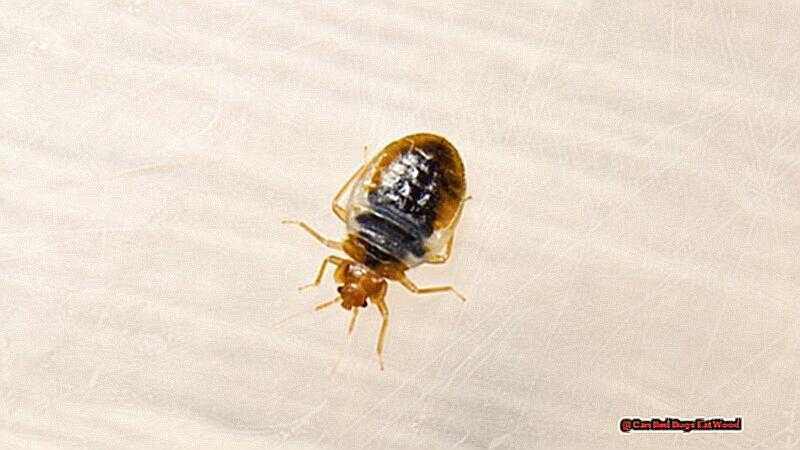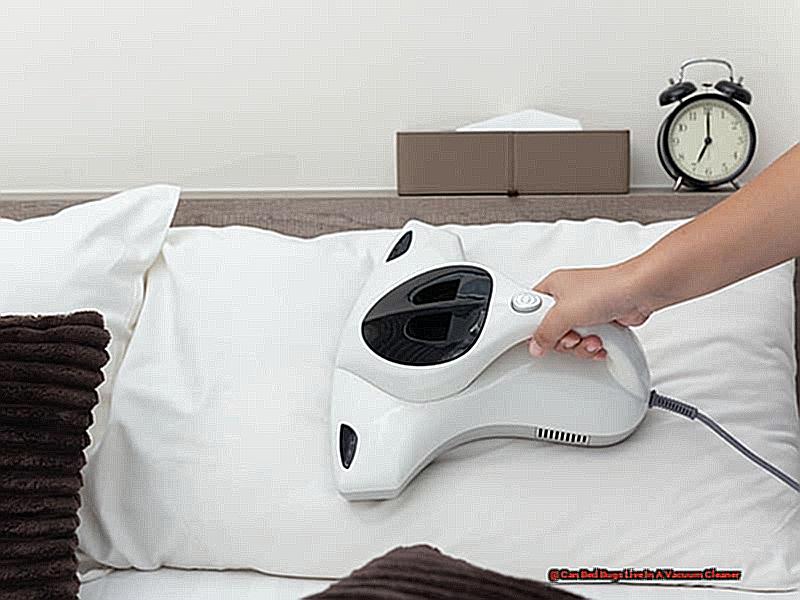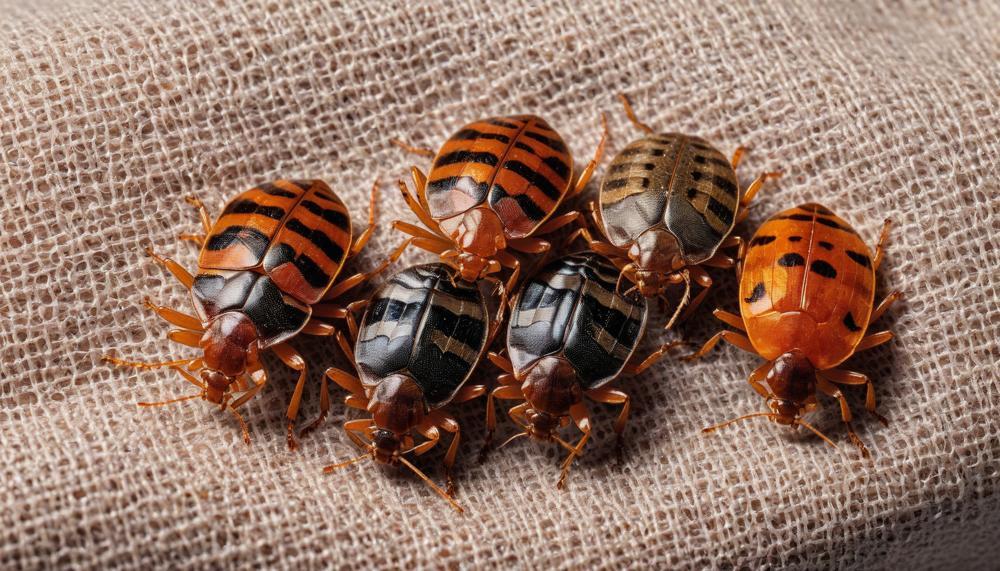Step into the intriguing world of bed bug eggs with us as we explore their fascinating characteristics and reproductive abilities.
These tiny pests may be a nuisance, but their ability to lay up to 500 eggs in a lifetime is truly impressive. To effectively combat an infestation, it is crucial to understand the texture and appearance of these eggs.
So grab your magnifying glass and join us on this informative journey to uncover the secrets of these mighty creatures.
Table of Contents
- 1 Bed Bug Eggs Hard or Soft?
- 2 Do Bed Bug Eggs Look Like Rice Grain?
- 3 What Do Bed Bug Eggs Look Like?
- 4 What Do Bed Bug Eggs Look Like After They Hatch?
- 5 Can Bed Bug Eggs Leave Strains After They Hatched?
- 6 How To Find Bed Bug Eggs?
- 7 How Do Bed Bug Eggs Feel
- 8 Do They Bed Bug Eggs Look Like Fly Larvae?
- 9 Conclusion
Bed Bug Eggs Hard or Soft?
Bed bugs, the tiny terrors that infest homes and cause chaos for their dwellers, are a formidable foe to face. Their elusive nature and rapid multiplication make them a difficult enemy to completely eradicate. And one crucial element in the battle against these bloodsuckers is determining whether their eggs are hard or soft. So, let us delve into the question: “Bed Bug Eggs Hard or Soft?” and arm ourselves with essential knowledge to combat these pesky pests.
To begin with, bed bug eggs are delicate, velvety, and have a milky-white color. They are similar in size to a grain of rice but have a softer texture and can be easily crushed with gentle pressure. However, due to their diminutive size and pale hue, spotting bed bug eggs without aid can be quite the challenge. A flashlight or camera may be necessary tools to catch sight of these minuscule menaces.
In their lifetime, female bed bugs have the ability to lay up to 500 eggs in clusters that resemble powdery dust. These clusters are typically found in tight crevices near bedding, providing a safe haven for the eggs to hatch undisturbed. This is why it is imperative to thoroughly inspect your bedroom for any signs of bed bug eggs.
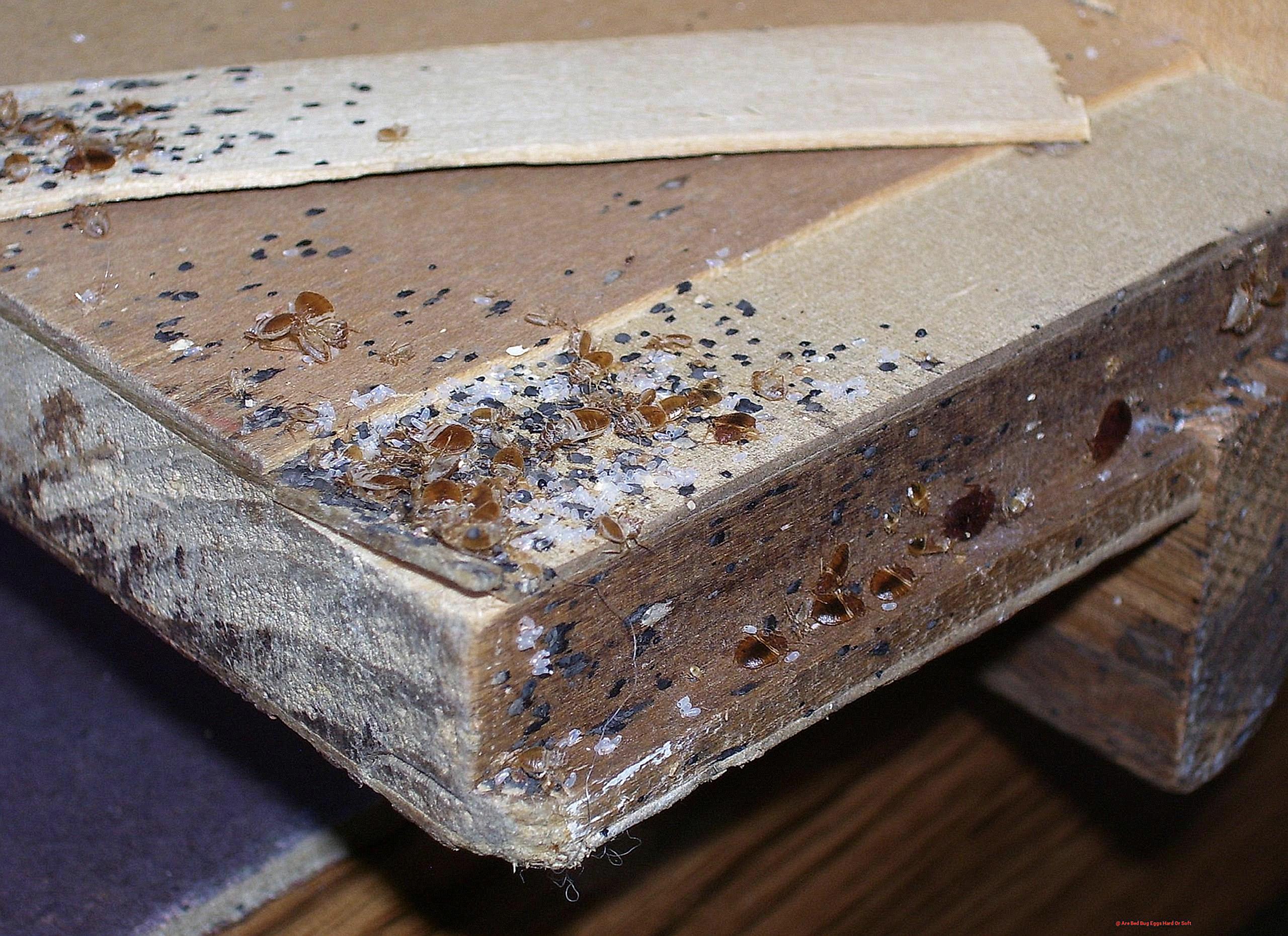
Now, on to the pressing question of how to eliminate bed bug eggs. The first step is decluttering your bedroom as bed bugs tend to seek refuge in messier areas. By removing clutter, you are creating an environment less conducive for their survival. Next, vacuum every nook and cranny of your room, including furniture, baseboards, carpets, and curtains. Steam cleaning or using certain chemicals can also be effective in eliminating these invaders and their eggs.
It is crucial to note that even after the bed bug eggs hatch, their outer shells remain intact and can linger on surfaces for extended periods.
Do Bed Bug Eggs Look Like Rice Grain?
The presence of bed bugs in our homes is a constant source of fear and anxiety. Despite their small size, these pests can cause significant problems if not dealt with promptly. Identifying their eggs is a crucial step in managing bed bug infestations. In this article, we will delve into the appearance of bed bug eggs and provide helpful tips for identification.
Bed bug eggs are often compared to grains of rice, but much smaller in size. Measuring only 1mm long, they are barely visible to the naked eye. Their elongated oval shape and pearly white-gray color make them easy to mistake for other small objects. If you come across any tiny, white, oval-shaped items on your mattress or furniture, it is likely that they are bed bug eggs.
In contrast, adult bed bugs are larger and have a distinct apple seed shape. They are typically dark brown or reddish-brown in color and have a flat, oval body. When crushed, they leave behind a dark red, pasty residue. This is an important detail to note when trying to differentiate between bed bug eggs and adult bed bugs.
Bed bugs are experts at hiding in cracks and crevices, making it challenging to spot their eggs. However, there are a few common areas where you can usually find them:
- Mattresses and Box Springs – Due to the warmth and close proximity to their food source (human blood), bed bugs tend to hide in mattresses and box springs. Check along the seams and folds of these items for any signs of eggs.
- Furniture – Bed bugs can also hide in furniture such as chairs, couches, and dressers. Thoroughly inspect these pieces for any indications of eggs.
- Walls and Floors – Bed bugs may lay their eggs on walls and floors near their hiding places. Be sure to check along baseboards and cracks in walls for any small, white eggs.
What Do Bed Bug Eggs Look Like?
If you’ve ever had the unfortunate experience of dealing with bed bugs, you know that these minuscule creatures can cause chaos in your home and peace of mind. While adult bed bugs are easily identifiable due to their reddish-brown color and apple seed shape, their eggs are a whole different story. These tiny, smooth, and white eggs can be incredibly challenging to spot, making it crucial to know what to look for. So, what exactly do bed bug eggs look like? Let’s dive in.
Size and Shape:
Bed bug eggs are about the size of a grain of rice, measuring roughly 1mm in length. They have an oval shape with a slightly pointed end, resembling a miniature football. Unlike other insect eggs that may have markings or spots, bed bug eggs are completely white and have a smooth surface. This makes them almost invisible to the naked eye, so it’s essential to use a flashlight for proper detection.
Color:
The color of bed bug eggs can vary from pearly white to a pale-gray hue. In some cases, they may even appear translucent. This color makes it easier for them to blend into light-colored surfaces, making them even more challenging to spot.
Location:
Bed bugs prefer to lay their eggs in hidden areas near their food source, which is typically close to bedding. These places can include cracks and crevices in furniture, walls, and even electronic devices. The eggs can also be found in seams and folds of mattresses and box springs, as well as behind headboards and baseboards.
Detection:
As mentioned earlier, bed bug eggs are nearly invisible to the naked eye. To spot them, use a regular or ultraviolet flashlight in dark areas. The eggs will appear as small white dots on surfaces or clustered together in groups.
Removal:
Thoroughly removing bed bug eggs is a vital step in managing an infestation.
What Do Bed Bug Eggs Look Like After They Hatch?
Let’s dive deeper into their appearance to truly understand the burstiness of these minuscule pests.
Upon hatching, bed bug eggs reveal themselves as flattened shells, appearing almost empty. To get a closer look at the physical traits of these tiny creatures, magnification is often necessary.
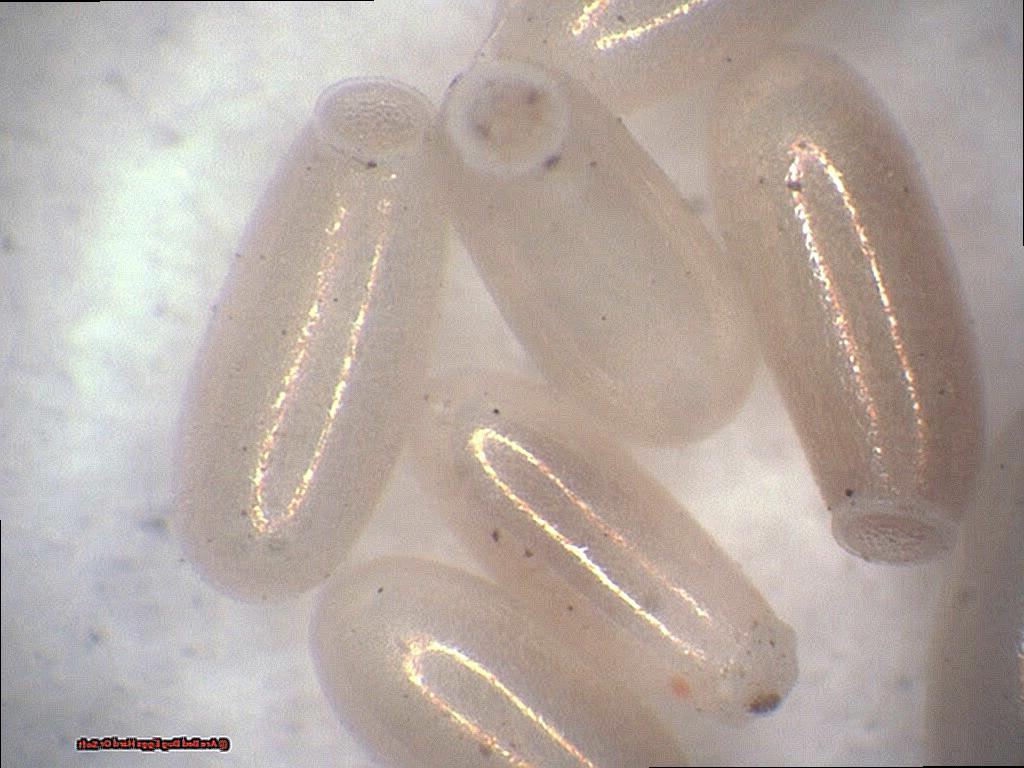
The eggs are small and white in color, with a smooth surface that can be challenging to spot without proper tools. They are usually laid in groups and have a unique adhesive that allows them to stick onto surfaces. You can commonly find these eggs in cracks and crevices near beds or furniture, as bed bugs prefer to lay their eggs in low-traffic areas.
After being laid, it takes about 5-16 days for bed bug eggs to hatch. The nymphs, known as baby bed bugs, immediately begin their quest for a host to feed on. This is why swift action is crucial when dealing with a bed bug infestation, as these nymphs can mature into adults within a few weeks if they have a steady food supply.
Female bed bugs can lay up to 12 eggs per day and will continue to do so as long as they have access to a host. This explains how travelers unknowingly bring these pests back home with them from hotels or other infested places.
One significant distinction between freshly laid bed bug eggs and those that have hatched is their shape. Once the nymph has emerged, the empty eggshell may appear more flattened and less rounded compared to new ones. This can serve as a helpful indicator when determining if an infestation is active or not.
In severe cases, bed bugs may lay their eggs outside of their usual hiding spots within the bedroom. However, they still prefer areas within 5-10 feet of the bed, such as cracks in walls or furniture.
Can Bed Bug Eggs Leave Strains After They Hatched?
As a connoisseur of bed bugs, I have witnessed firsthand the chaos and destruction these small bloodsuckers can wreak upon a home. Notorious for their rapid reproduction and resilience, they pose a serious threat to the public and can be challenging to eradicate once they infiltrate a household. But how can one detect a bed bug infestation? And what about their eggs – do they leave behind any marks after hatching? Let us delve into the telltale signs of a bed bug invasion and uncover the truth.
Identifying bed bugs can prove to be a daunting task, as they bear a striking resemblance to other pests, and their bites are often mistaken for those of other insects. However, there are some early warning signs that one must keep an eye out for. Firstly, pay attention to any unusual bite patterns. Bed bug bites typically manifest in a straight line or cluster, as these pests tend to feed on the same location multiple times. Another red flag is the onset of itching after introducing new furniture into your home. Bed bugs are skilled hitchhikers and can easily make their way into your abode by latching onto infested furniture or garments.
Another surefire indication of a bed bug infestation is their distinctive odor, which has been described as smelling like coriander or berries. If you detect this scent in your house, it is time to start scouring for signs of bed bugs.
But can bed bug eggs leave behind any marks after hatching? The answer is a resounding yes. Although these eggs are barely visible to the naked eye, they can still leave behind visible traces once they hatch. These eggs possess a unique adhesive that enables them to adhere to surfaces and remain in place until they hatch.
How To Find Bed Bug Eggs?
Bed bugs are a common household pest that can cause distress and discomfort. These small, parasitic insects feed on human blood and can quickly infest your home if not properly addressed. One of the key indicators of a bed bug infestation is the presence of their eggs. But how do you find these minuscule, elusive eggs? In this article, we will discuss the most effective methods for locating bed bug eggs in your home.
Look for signs of bed bug activity:
Before embarking on a search for bed bug eggs, it is crucial to identify signs of their presence. These may include dark blood spots, cast skins, and fecal spots on sheets, bedding, and mattresses. These markings are left behind by bed bugs as they feed and move around. If you happen to come across these telltale signs, it is highly likely that there are bed bugs and their eggs lurking in your home.
Inspect common hiding places:
Bed bugs prefer to conceal themselves in dark, secluded areas close to their source of sustenance – humans. This includes mattress seams and joints, box springs, and behind the headboard. Using a flashlight, carefully scrutinize these spots for clusters of white or cream-colored eggs. Bed bug eggs are typically laid near where adults hide and may be challenging to spot, so do not overlook any area during your search.
Check cracks and crevices:
Bed bugs have a knack for hiding in small cracks and crevices around your home. To uncover their eggs, thoroughly inspect these areas in walls, furniture, and other potential hiding spots. Use a credit card or thin object to scrape along the edges of these spaces and reveal any concealed eggs.
Seek professional help:
If you suspect a bed bug infestation but are struggling to locate their eggs, it is best to seek professional assistance.
How Do Bed Bug Eggs Feel
Bed bugs are dreaded by many, as they can quickly infest a home and leave behind itchy bites. But what makes them even more difficult to deal with is their almost invisible eggs. As a bed bug egg expert, I am here to provide a comprehensive guide on the perplexing texture of these eggs and effective detection methods.
The Texture of Bed Bug Eggs
Bed bug eggs possess a smooth texture and are shaped like grains of rice. Their color ranges from white to yellowish, and they are filled with fluid that keeps the shell tightly pulled. When touched lightly, they feel soft and nearly undetectable. Measuring only 1mm in size, these eggs are almost invisible to the human eye.
How to Detect Bed Bug Eggs
Now that you have an idea of the perplexity of bed bug eggs, let’s explore ways to spot them in your home.
- Thoroughly Inspect Common Hiding Places: Bed bugs prefer dark and secluded areas, such as cracks and crevices in furniture, mattresses, and walls. Take time to carefully check these spots for any signs of eggs, which may be clustered together.
- Utilize a Flashlight: Due to their small size and tendency to hide in dark places, using a flashlight can aid in spotting bed bug eggs. The light will reflect off their smooth surface, making them easier to see.
- Look for Signs of Molting: As bed bugs grow and mature, they shed their skin multiple times. Keep an eye out for these discarded skins, as they may also contain eggs.
- Consider Seeking Professional Assistance: If you suspect a bed bug infestation but cannot find any eggs or signs of their presence, it may be best to seek professional help. Pest control experts have the necessary tools and expertise to locate and eliminate bed bug eggs effectively.
Do They Bed Bug Eggs Look Like Fly Larvae?
It’s a common misconception that these two pests are alike, as they share some similarities in appearance. However, upon closer inspection, there are distinct characteristics that set them apart.
Let’s delve into the details of bed bug eggs and fly larvae to better understand their unique qualities.
Bed Bug Eggs:
- Size: Measuring at only 1mm, bed bug eggs are incredibly small and can easily go unnoticed.
- Color: They have an off-white color with a pearly shine, thanks to the sticky substance used by female bed bugs to attach them to surfaces near their food source.
- Shape: Oval-shaped like a grain of rice, but much tinier.
- Location: Bed bug eggs are typically found in clusters near where these pests hide during the day, such as furniture cracks or wall crevices. They can also be found on clothes or bedding.
- Hatching Time: In 6-10 days, bed bug eggs hatch into nymphs, depending on the temperature and humidity levels. High humidity (around 75%) is crucial for successful hatching.
Fly Larvae:
- Size: Unlike bed bug eggs, fly larvae can vary in size depending on the species. However, they are generally larger than 1mm.
- Color: They come in a range of colors from white to grayish-brown.
- Shape: With a worm-like appearance and small hairs covering their body, fly larvae have a distinct shape.
- Location: These larvae can be found in various places such as decaying food, trash cans, or even deceased animals.
- Hatching Time: Within a few days of being laid, fly larvae will hatch into pupae.
It’s clear that there are noticeable differences between bed bug eggs and fly larvae.
Conclusion
In conclusion, the world of bed bug eggs is a fascinating one, filled with intriguing characteristics and impressive reproductive abilities. These tiny pests may seem harmless, but their ability to lay up to 500 eggs in a lifetime makes them a formidable foe. To effectively combat an infestation, it is crucial to understand the appearance and location of these eggs.
Through this informative journey, we have discovered that bed bug eggs are soft and easily crushed with gentle pressure. Their delicate texture and size, similar to a grain of rice, make them challenging to spot without aid. These elusive eggs often hide in tight crevices near bedding, providing a safe haven for them to hatch undisturbed.
Furthermore, we delved into the question “Do Bed Bug Eggs Look Like Rice Grain?” and found that their elongated oval shape and pearly white-gray color can be mistaken for other small objects. However, adult bed bugs have a distinct apple seed shape and leave behind a dark red residue when crushed – clear indicators of an infestation.
We also uncovered the secrets of freshly laid bed bug eggs and how they appear as flattened shells once hatched. Their unique adhesive allows them to stick onto surfaces and remain in place until they hatch. And although nearly invisible to the naked eye, these eggs can still leave behind visible traces after hatching.
To effectively locate bed bug eggs, thoroughly inspecting common hiding places such as mattress seams and joints, box springs, and cracks in walls or furniture is essential. Using a flashlight can aid in spotting these elusive eggs due to their small size and tendency to hide in dark places.
Lastly, we debunked the misconception that bed bug eggs look like fly larvae by highlighting their distinct differences in size, color, shape, location, and hatching time. It is crucial not to confuse these two pests as their treatment methods differ significantly.
In conclusion, understanding the appearance and behavior of bed bug eggs is crucial for effective pest control measures. By equipping ourselves with this knowledge and staying vigilant for any signs of infestation, we can successfully combat these tiny terrors and protect our homes from their invasion.

